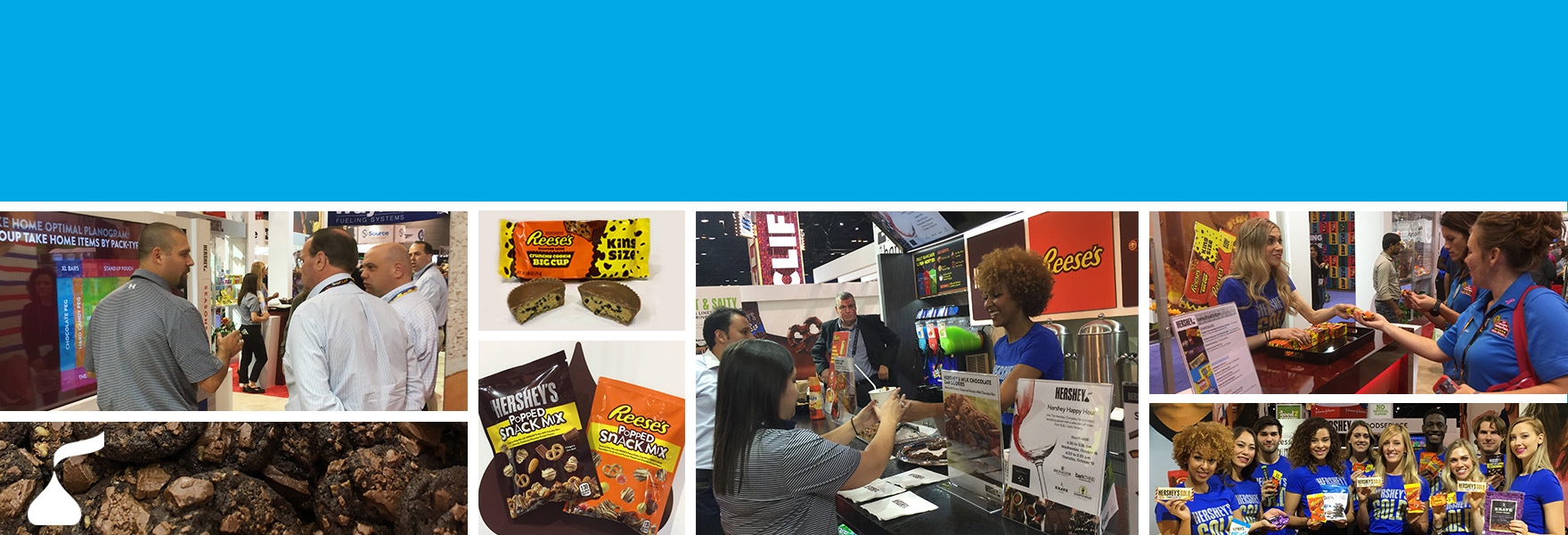Keeping the ‘Convenience’ in Convenience Stores
By definition, convenience stores offer ease. And yet, the store owners themselves are faced with countless challenging decisions as they work to stock products that appeal to a broad base. How do they choose those items? How many do they buy? How do they organize them? How do they display them?
Last week at The Association for Convenience & Fuel Retailing show (NACS 2017), the options were head-spinning. At Chicago’s McCormick Place, across more than 390,000 square feet of exhibit space, it wasn’t just the consumable products that were competing for business (there were different types of cold-brew coffees; kombucha on draft; water infused with protein, caffeine, anti-oxidants and other additives; meat snacks galore; chicken waffle patties; products to make coffee more exciting, such as Reese’s coffee creamer; hard-boiled eggs by the dozen; an item that purports to decrease blood alcohol and the list goes on). Convenience store reps were also faced with decisions surrounding fuel pumps, signage, point-of-sales systems, marketing, car wash technology, loyalty program offerings, tools, toys, art, cleaning supplies, refrigerator units, display cases and just about anything else imaginable.
It was obvious by the extensive offerings that many convenience stores strive to be everything to everyone. As the owners work to fulfill that ambitious mission, the team from The Hershey Company was standing by to help.
"Strike Zones" and the Retail Experience
Within the Hershey booth, surrounded by samples of Jolly Rancher Slushies and cookies baked using Hershey’s chocolate, Lexy Damron stood next to a custom display, talking about the retailer’s “strike zone,” which is the area on shelves that most often draws a shopper's attention. Damron, who is Category Analyst for the Northeast Convenience Channel with The Hershey Company, was at the show specifically to talk with attendees about the power of placement and how Hershey can help improve the retail experience and sales. The snacking powerhouse doesn’t just specialize in snacks and confection, after all. It’s also an innovation hub where futurists, analysts and insights experts are working to understand and bolster the shopping experience for its customers and its customers’ customers.
“Hershey is about customization, talking about shoppers, bringing our insights and what’s relevant to the table to help organize items in a way that’s easy and will sell,” says Damron.
In her role, Damron works to ensure Hershey’s customers are carrying the right items; that the amount of shelf space those items occupy is equivalent to the percentage of sales those items represent; and that those items are merchandised in a way that optimizes their performance. “When we go into these mom-and-pop shops, we want to figure out, do they have the right assortment? We look at the top core items (like Reese’s, Hershey's, and Kit Kat) because those are going to drive the base business, along with the ones that are breaking through the mold (like Reese’s Stuffed with Pieces) and becoming core,” she says.
The "Category Captain" Understands the Consumer
In recent years, Convenience Store News has recognized Hershey as “Category Captain” for convenience stores because of the company’s drive to leverage insights and increase sales. Damron says Hershey is able to do that because its team works to understand consumer behavior, analyze how shoppers navigate the aisles and create custom solutions for individual stores around product displays, placement and packaging. Hershey customers are also invited to visit the Global Customer Innovation Center in Hershey, Pennsylvania for strategy sessions and to learn how Hershey is reinventing the candy aisle based on shopper insights (there, they can get a glimpse of futuristic concepts like Medley, which uses technology such as virtual reality to reinvent the retail experience).
“We embrace change. That’s how Hershey has stayed ahead of the game, and we really encourage our customers to adapt to change well,” says Damron.
Keeping the "Convenience" in Shopping
Convenience, after all, is on the rise. Consumers have limited time, and with the growing popularity of online retail and grocery delivery options, they have many choices when it comes to shopping. That, says Damron, creates even more opportunities for the convenience store category. According to a recent Nielsen report, consumers today are making fewer trips to convenience stores but they’re spending more on each trip. In 2016, sales reached more than $140 billion, which is 11.5 percent higher than 2012, according to the report.
“The consumer is spending more time doing things that they like to do, and therefore the need for convenience is higher,” says Damron. “We want to lead our retail customers into embracing and riding that convenience wave.”
In doing so, the experts at Hershey are helping to keep the “convenience” in shopping, and working with the c-store business owners who may benefit from that convenience the most.
